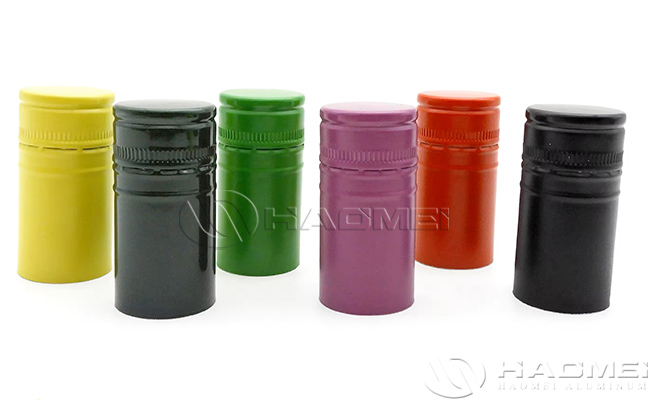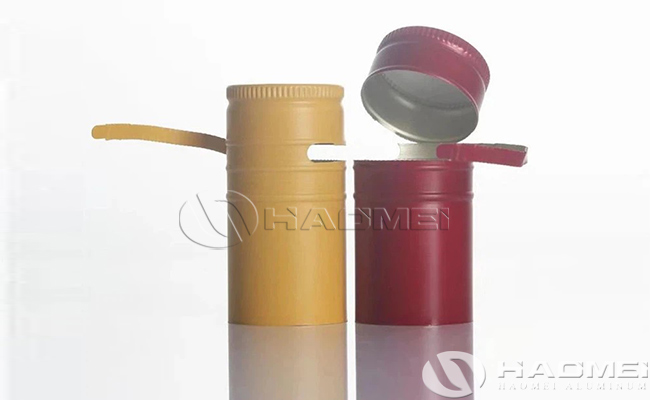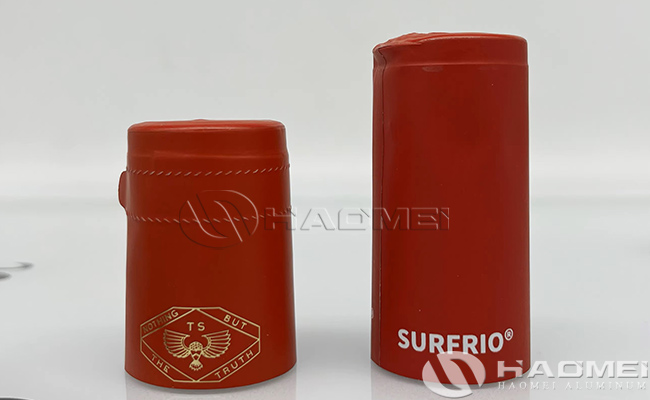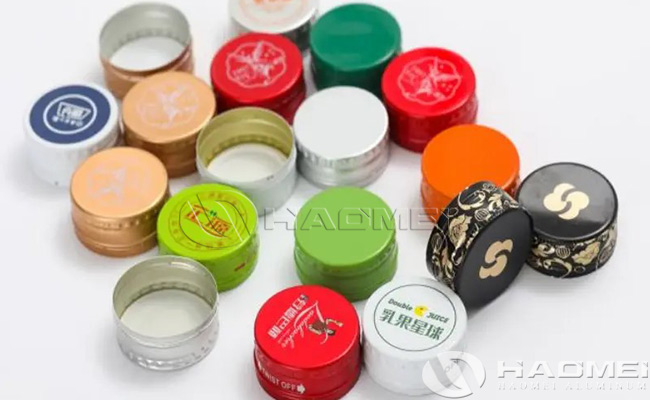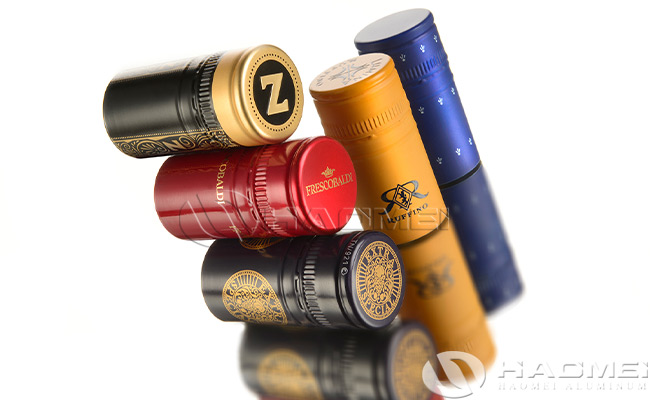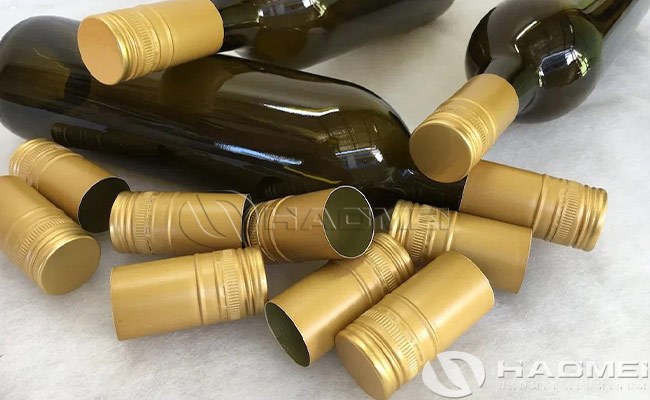Behind the trend of choosing aluminum for wine bottle caps, it reflects the comprehensive advantages of aluminum bottle caps in various aspects such as performance, environmental protection and design, etc.
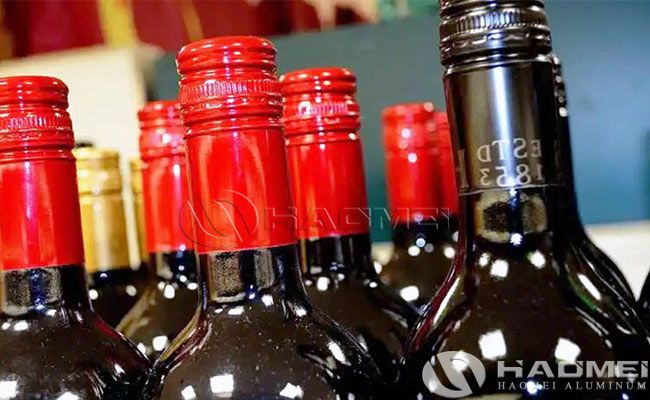
The following are the core reasons why it has become the mainstream choice:
1. Excellent sealing performance, prolonging the shelf life of wines
- Airtightness guarantee: Aluminum has strong ductility, and can be formed by precision stamping to seamlessly fit the structure with the bottle mouth, together with the inner cushion (e.g. PE or PVC), effectively isolating oxygen penetration and preventing oxidative deterioration of wine (e.g. loss of tannin in red wine, volatilization of aroma in white wine).
- Anti-corrosion: The oxidized layer on the aluminum surface is naturally generated, which is resistant to acid, alkali and humidity, and avoids rusting or contamination of the wine due to environmental changes.
- Temperature adaptability: Aluminum caps remain stable within the range of -40°C to 120°C, making them suitable for refrigerated alcoholic beverages or high-temperature sterilization processes (e.g. part of the sake filling process).
2. Environmental sustainability, meeting the needs of industry transformation
- Recycling: The recycling rate of aluminum is as high as 95%, and the energy consumption of melting is only 5% of that of virgin aluminum, which is in line with the global “carbon-neutral” policy guidance (e.g. the EU Green Packaging Act).
- Reduced Plastic Substitution: Compared with plastic bottle caps, aluminum wine bottle caps have no risk of microplastic release and can be paired with a biodegradable liner to reduce environmental pollution.
- Lightweight design: Aluminum caps are 70% lighter than glass stoppers, which reduces carbon emissions from transportation and meets the ESG (Environmental, Social and Governance) objectives of wine companies.
3. Design Flexibility and Brand Value Enhancement
- High-precision printing: Aluminum surfaces can be anodized, laser engraved, color printed, etc. to achieve complex patterns, metallic texture or anti-counterfeiting QR codes to enhance brand recognition (e.g., high-end whisky bottle caps).
- Optimization of opening experience: innovative structural designs such as knob-type and pull-ring-type, taking into account the convenience and sense of ceremony, catering to the preferences of young consumers.
- Integration of anti-counterfeiting technology: the aluminum cap is easy to implant RFID chips, breakpoint anti-twisting teeth and other anti-theft structures, to solve the problem of the proliferation of counterfeit wine (such as Maotai's aluminum cap's “double-tooth anti-pouring” patent).
4. Cost and production efficiency advantages
- Scale production: aluminum stamping and forming speed (up to 800-1200 per minute), high degree of automation, the cost of a single cap is lower than that of a cork (especially suitable for mid-range wines).
- Strong compatibility: Aluminum caps are compatible with glass, ceramic, PET and other bottle types, reducing the cost of packaging line modification for wine enterprises.
- Stable supply chain: the global supply of aluminum is sufficient, and the price fluctuation is less than that of natural cork (affected by the growth cycle of oak trees).
5. Industry standard promotion and technology iteration
- Regulatory requirements: EU EN 16293, China BB/T 0034 and other standards specify the sealing performance index of alcohol, and aluminum caps have better compliance through testing and certification.
- Technological upgrading: Innovative applications such as film-coated aluminum lids (to increase scratch resistance) and smart aluminum lids (with built-in NFC sensors to monitor the opening status) continue to expand the usage scenarios.
MESSAGE
RECOMMENDED PRODUCTS
PRODUCTS
CONTACT US
Add:Zhengzhou, Henan, China

